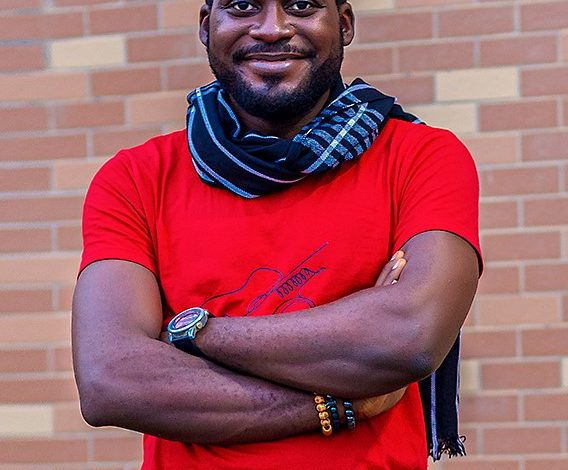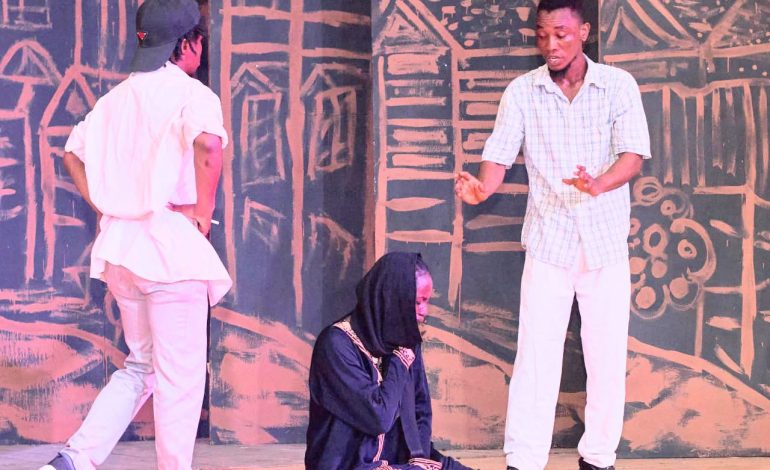Marriage of Nigerian arts and textile at TexArt Fair 2023
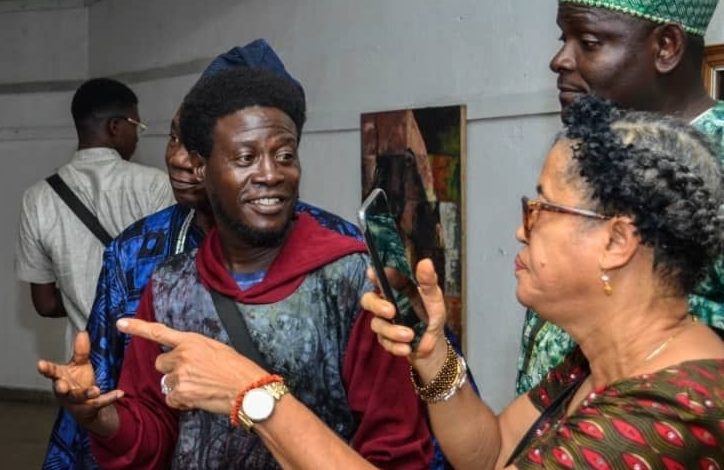
By Godwin Okondo
TEXTART Fair 2023 was among the festivals that provided excitement and offered a unique cultural aspect to the country’s vibrant festival landscape. It was a convergence of textile designs and artistic expressions aimed at fostering collaboration and providing a platform for artists, textile designers and craftsmen to showcase their works. It was a collaboration between Blackulheritage Studios and the National Museum of Unity, Ibadan to celebrate Nigeria’s creativity and the cultural richness of the ancient city. Organisers say the maiden edition of Texart Fair 2023 was a success, as it hit the mark to promote and project Nigeria’s rich cultural heritage in its arts, crafts, and textile designs. Organisers say its stated aim of encouraging crafts makers and bringing collectors to a meeting point, and attracting international community to the art market was fulfilled.
Organized by a prominent multi-dimensional artist and environmental activist, and a distinguished sculptor and art consultant, Wale Asubiojo, Texart Fair 2023 highlighted the significance of indigenous crafts in the face of challenges posed by the country’s focus on natural resources like gas and crude oil and encroachment of Asians on the local industry. While explaining reasons for the fair, Asúbíòjò emphasised the economic potential of neglected crafts such as textile works, wood cravings, bronze works and others, saying if given proper attention, these crafts would significantly contribute to the national economic growth (GDP) in the global market.
Asubiojo expressed gratitude to the National Museum of Unity, Ibadan, when he said. “The contribution of all the committee members and the National Museum of Unity, Ibadan, has shown that this maiden edition is a successful one and will generate profits for every participant of this credible art market. We have been able to make a lot of efforts in making this market remain the best of which many visual artists, craftsmen and women, tools makers, art lovers, art collectors and many others will meet to transact business and take it to the next level.
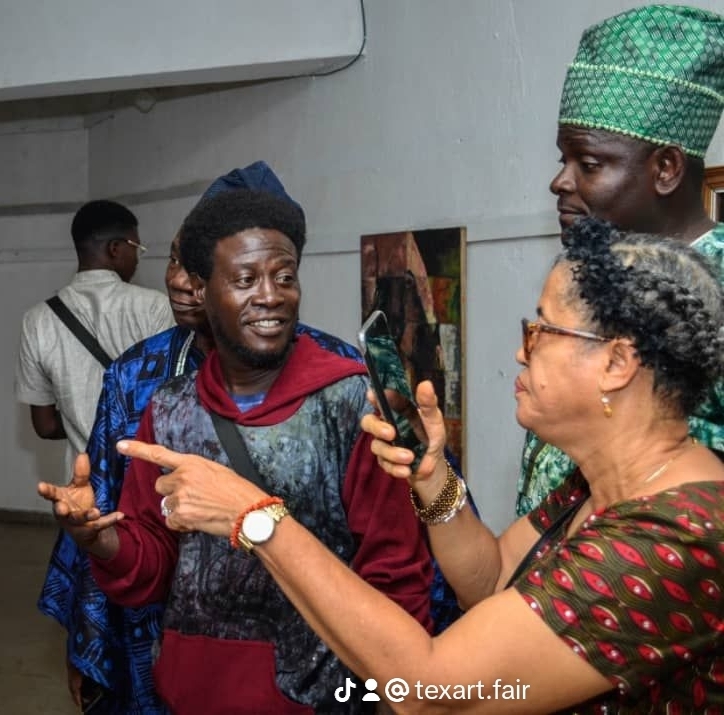
Convener of TexArt Fair 2023, Wale Asubiojo (facing camera) taking guests round the exhibition segment of the fair
“Promoting art is not an easy task. It is quite understandable that the government cannot provide all the facilities needed but they must support wonderful projects such as this, a credible art market by investing in art and our indigenous crafts in Nigeria. Art and tourism work together. Meeting people, talking to people, visiting historical places and feasting eyes on some wonderful pieces of creative art works can make people live a better and easy life even in our day to day activities. Also, if we are aware of certain roles we need to play as individuals, we can make our environment look more conducive and healthy. Moreso, Texart Fair is created to encourage the makers of crafts, and at the same time, bring together buyers to a meeting point where business, money and materials can be exchanged for posterity.”
While delivering the fair’s keynote address, Chief Adeniyi Adediran explored the evolution of Nigerian textile and arts from the 20th to the 21st century. He stressed the need for collaboration among professionals, designers, technologists, and artists to strengthen indigenous technologies and compete globally. According to him, “today, the Chinese and Indian textile designers explore their creative ingenuity and improved technologies to outsmart the Nigerian designers. In fact, the small scale adire textile industrialists in all the nooks and crannies of Abeokuta, Osogbo, Ibadan, Ekiti, Ilorin, Kano, etc cannot meet the global demand for adire. The gap so plausibly created spurs the Chinese and Indians to expedite adire mass production by employing modern, improved technologies that seem to be more sophisticated.
“Without mincing words, the future of Nigerian textile is bright and enterprising if only the present challenges that Nigerian textiles face from Asian countries are considered as source of strength. This could be translated into development of our indigenous technologies and expand our creativities to compete favourably in the international market. Time is ripe to strengthen and intensify a sustainable synergy between textile related professionals, designers, technologists, artists, and manufacturers.
“Exploration of culturally-motivated designs in all facets of textile productions which include, among others, spinning, weaving, printing, dyeing, fashion designing, garment making, embroidery, monogramming and other textile accessories to distinguish themselves in the global market. It is very paramount that our textile art and artworks should focus on varied interests such as social classes, the military, the political class, civilians, the royalty, students, professionals and artisans.”
The Chief Librarian at the National Museum of Unity, Aisehinomo Ezomo-Ajiwe, explored the cultural significance of coral beads in Benin culture, saying beads symbolize royalty, power, and hold ceremonial importance, especially during events like the Ugie Ivie Festival. According to him, festivals in general are joyous occasions celebrated with specific aim or aims in view, and as such, they have beliefs attached to them.
“In African festivals and their celebrations, the connection between sacred symbols of culture, myths and ritual are put into practical expression,” Ezomo-Ajiwe explained. “To buttress the spiritual use of coral beads, the Benin-speaking people of Edo State, Nigeria, celebrate the royal festival of beads called Ugie Ivie yearly with music and dance performances. This cultural and religious event is viewed as a physical attempt to communicate with the spirit world, thei ancestors, seeking for blessings, good health and prosperity. It is celebrated with pomp and grandeur as it marks the end of the Benin year and ushers in a new year with hope of peace and prosperity.
“During the week-long festival, the wearing of beads within the Benin Kingdom is prohibited until after the ceremony. By preserving and celebrating the cultural significance of coral beads, the people reinforce their cultural identity and contribute to the global tapestry of human diversity and artistic expression.”
Also a prominent cultural icon, Dr. Adeola Abiodun Adeoti highlighted the importance of rejuvenating Nigerian textile and art, emphasizing its role in preserving cultural identity. He expressed confidence that Nigeria has a bright future in her arts, and encouraged the younger generation to embrace and continue the legacy.
According to Adeoti, “Textile art is a very vital part of human existence. It is the backbone of human life as early as when civilization began thousands of years ago. Nigerian textile and art need rejuvenation so that it can be attractive to the next generation. Nigeria textile art are the fabrics produced in Nigeria by Nigerians with local materials available in the localities. This spans through the entirety of all the regions in Nigeria.
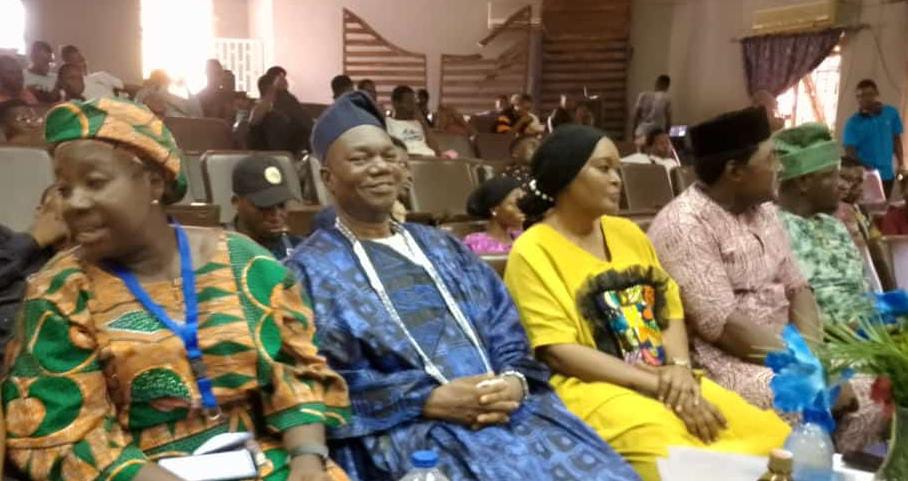
Guest speaker, Chief Adeniyi Adediran (second left); Curator of National Museum of Unity, Ibadan, Mrs. Oriyomi Otuka Pamela and delegates from Ogun State Ministry of Culture and tourism at TexArt Fair 2023
“Art is a synthesis of cultural formation and an encouragement of the creative spark in individuals. Nigerian arts and crafts are clustered in fabrics, ceramics, bronze, brass and iron, fibres, handicrafts, ivory, jewelry, leatherworks, woodwork, pumpkin decorations, tie and dyeing, etc. Most of these art works are found in almost major galleries and museums across the world, bringing out Nigerian culture. Art and craft are playing major roles in Nigerian traditional societies. The artists are meeting the needs of the society in architecture, textiles, ceramics, painting, graphics, etc as professionals.
“Artists here today have delved much into textile arts and other various kinds of arts to tell stories and passing on the history to the next generation. The creativity of the artists ranges from materials used to different approaches in executing ideas, reflecting different styles with colours, patterns and design beyond practical usage. In the exhibition stand, the textile artists have developed forms and are able to produce beautiful things that aid daily life. Other art works present make the fusion of textile art and art to be seen as part of daily essentials and not for entertainment purpose alone.”
“There are adequate arts and crafts in Nigeria in which the next generation can venture into for continuity. It is my pleasure to affirmatively declare that the future of arts in Nigeria is bright and promising. As vast as we are today, with the kind of art works here present, it is convincing that there is hope for textile art, arts and crafts in Nigeria. Therefore, let the young ones be taught the arts so that the continued process will not be truncated by the civilization. But rather, let civilization and technology be a source to push the art forward.”
AS TexArt Fair 2023 came to a close, it was clear that the organiser, Asubiojo’s vision of fostering collaboration and global recognition for local crafts took a significant step forward with the success of the inaugural event. And as he looks forward to this year’s event, he’s buoyed that practitioners in Nigeria’s textile and arts spaces will have a platform to continue to showcase their works to an admiring audience and patrons.

